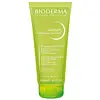What's inside
What's inside
 Key Ingredients
Key Ingredients

 Benefits
Benefits

 Concerns
Concerns

 Ingredients Side-by-side
Ingredients Side-by-side

Water
Skin ConditioningAlcohol
AntimicrobialGlycerin
HumectantDiglycerin
HumectantIsododecane
EmollientIsodecyl Neopentanoate
EmollientAluminum Starch Octenylsuccinate
AbsorbentButylene Glycol
HumectantPolymethyl Methacrylate
Ptfe
Cetearyl Isononanoate
EmollientDimethicone
EmollientDimethicone/Bis-Isobutyl PPG-20 Crosspolymer
EmollientPolyacrylate-13
Cetyl Alcohol
EmollientParfum
MaskingLauryl Glucoside
CleansingPolyglyceryl-2 Dipolyhydroxystearate
Skin ConditioningPolyisobutene
Acrylates/C10-30 Alkyl Acrylate Crosspolymer
Emulsion StabilisingSodium Polyacrylate
AbsorbentLens Esculenta Seed Extract
Skin ProtectingO-Cymen-5-Ol
AntimicrobialSodium Hydroxide
BufferingPolysorbate 20
EmulsifyingSorbitan Isostearate
EmulsifyingPhenoxyethanol
PreservativeGlycyrrhiza Inflata Root Extract
Skin ConditioningEthylhexylglycerin
Skin ConditioningTocopherol
AntioxidantCI 42090
Cosmetic ColorantWater, Alcohol, Glycerin, Diglycerin, Isododecane, Isodecyl Neopentanoate, Aluminum Starch Octenylsuccinate, Butylene Glycol, Polymethyl Methacrylate, Ptfe, Cetearyl Isononanoate, Dimethicone, Dimethicone/Bis-Isobutyl PPG-20 Crosspolymer, Polyacrylate-13, Cetyl Alcohol, Parfum, Lauryl Glucoside, Polyglyceryl-2 Dipolyhydroxystearate, Polyisobutene, Acrylates/C10-30 Alkyl Acrylate Crosspolymer, Sodium Polyacrylate, Lens Esculenta Seed Extract, O-Cymen-5-Ol, Sodium Hydroxide, Polysorbate 20, Sorbitan Isostearate, Phenoxyethanol, Glycyrrhiza Inflata Root Extract, Ethylhexylglycerin, Tocopherol, CI 42090
Water
Skin ConditioningCaprylyl/Capryl Glucoside
CleansingPropanediol
SolventGlycerin
HumectantZinc Gluconate
Skin ConditioningSalicylic Acid
MaskingGlycolic Acid
BufferingCoco-Glucoside
CleansingGlyceryl Oleate
EmollientCellulose Gum
Emulsion StabilisingSodium Hydroxide
BufferingCitric Acid
BufferingParfum
MaskingInulin
Skin ConditioningXanthan Gum
EmulsifyingMannitol
HumectantSodium Citrate
BufferingXylitol
HumectantCellulose
AbsorbentFructose
HumectantGlucose
HumectantRhamnose
HumectantSodium Metabisulfite
AntioxidantFructooligosaccharides
HumectantTocopherol
AntioxidantHydrogenated Palm Glycerides Citrate
EmollientWater, Caprylyl/Capryl Glucoside, Propanediol, Glycerin, Zinc Gluconate, Salicylic Acid, Glycolic Acid, Coco-Glucoside, Glyceryl Oleate, Cellulose Gum, Sodium Hydroxide, Citric Acid, Parfum, Inulin, Xanthan Gum, Mannitol, Sodium Citrate, Xylitol, Cellulose, Fructose, Glucose, Rhamnose, Sodium Metabisulfite, Fructooligosaccharides, Tocopherol, Hydrogenated Palm Glycerides Citrate
 Reviews
Reviews

Ingredients Explained
These ingredients are found in both products.
Ingredients higher up in an ingredient list are typically present in a larger amount.
Glycerin is already naturally found in your skin. It helps moisturize and protect your skin.
A study from 2016 found glycerin to be more effective as a humectant than AHAs and hyaluronic acid.
As a humectant, it helps the skin stay hydrated by pulling moisture to your skin. The low molecular weight of glycerin allows it to pull moisture into the deeper layers of your skin.
Hydrated skin improves your skin barrier; Your skin barrier helps protect against irritants and bacteria.
Glycerin has also been found to have antimicrobial and antiviral properties. Due to these properties, glycerin is often used in wound and burn treatments.
In cosmetics, glycerin is usually derived from plants such as soybean or palm. However, it can also be sourced from animals, such as tallow or animal fat.
This ingredient is organic, colorless, odorless, and non-toxic.
Glycerin is the name for this ingredient in American English. British English uses Glycerol/Glycerine.
Learn more about GlycerinParfum is a catch-all term for an ingredient or more that is used to give a scent to products.
Also called "fragrance", this ingredient can be a blend of hundreds of chemicals or plant oils. This means every product with "fragrance" or "parfum" in the ingredients list is a different mixture.
For instance, Habanolide is a proprietary trade name for a specific aroma chemical. When used as a fragrance ingredient in cosmetics, most aroma chemicals fall under the broad labeling category of “FRAGRANCE” or “PARFUM” according to EU and US regulations.
The term 'parfum' or 'fragrance' is not regulated in many countries. In many cases, it is up to the brand to define this term.
For instance, many brands choose to label themselves as "fragrance-free" because they are not using synthetic fragrances. However, their products may still contain ingredients such as essential oils that are considered a fragrance by INCI standards.
One example is Calendula flower extract. Calendula is an essential oil that still imparts a scent or 'fragrance'.
Depending on the blend, the ingredients in the mixture can cause allergies and sensitivities on the skin. Some ingredients that are known EU allergens include linalool and citronellol.
Parfum can also be used to mask or cover an unpleasant scent.
The bottom line is: not all fragrances/parfum/ingredients are created equally. If you are worried about fragrances, we recommend taking a closer look at an ingredient. And of course, we always recommend speaking with a professional.
Learn more about ParfumSodium Hydroxide is also known as lye or caustic soda. It is used to adjust the pH of products; many ingredients require a specific pH to be effective.
In small amounts, sodium hydroxide is considered safe to use. However, large amounts may cause chemical burns due to its high alkaline.
Your skin has a natural pH and acid mantle. This acid mantle helps prevent harmful bacteria from breaking through. The acid mantle also helps keep your skin hydrated.
"Alkaline" refers to a high pH level. A low pH level would be considered acidic.
Learn more about Sodium HydroxideTocopherol (also known as Vitamin E) is a common antioxidant used to help protect the skin from free-radicals and strengthen the skin barrier. It's also fat soluble - this means our skin is great at absorbing it.
Vitamin E also helps keep your natural skin lipids healthy. Your lipid skin barrier naturally consists of lipids, ceramides, and fatty acids. Vitamin E offers extra protection for your skin’s lipid barrier, keeping your skin healthy and nourished.
Another benefit is a bit of UV protection. Vitamin E helps reduce the damage caused by UVB rays. (It should not replace your sunscreen). Combining it with Vitamin C can decrease sunburned cells and hyperpigmentation after UV exposure.
You might have noticed Vitamin E + C often paired together. This is because it is great at stabilizing Vitamin C. Using the two together helps increase the effectiveness of both ingredients.
There are often claims that Vitamin E can reduce/prevent scarring, but these claims haven't been confirmed by scientific research.
Learn more about TocopherolWater. It's the most common cosmetic ingredient of all. You'll usually see it at the top of ingredient lists, meaning that it makes up the largest part of the product.
So why is it so popular? Water most often acts as a solvent - this means that it helps dissolve other ingredients into the formulation.
You'll also recognize water as that liquid we all need to stay alive. If you see this, drink a glass of water. Stay hydrated!
Learn more about Water